Dawn Little's Blog, page 16
November 28, 2011
I Want My Hat Back by Jon Klassen
Recommended Grades: 4-6
A bear loses his hat and asks the other animals if they have seen it. A surprise ending might catch the reader off guard.
Note: I originally learned about this book on Twitter via my Professional Learning Network (PLN). If you aren't familiar with it already, Twitter is a fantastic professional development resource!
Lesson Idea:
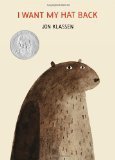

Writer's Workshop: Read aloud I Want My Hat Back and analyze the way the author indicated dialogue. Provides students with other books in which the author uses dialogue in non-traditional ways. Have students analyze all books and choose one style to practice with in their own writing. Disclaimer: This idea came from Donalyn Miller, a fantastic resource in all things reading!
and analyze the way the author indicated dialogue. Provides students with other books in which the author uses dialogue in non-traditional ways. Have students analyze all books and choose one style to practice with in their own writing. Disclaimer: This idea came from Donalyn Miller, a fantastic resource in all things reading!
Trait: Organization: After reading aloud I Want My Hat Back , discuss the surprise ending with students. What direction did you think the author was going in? How did the ending stand out? Analyze other picture books with surprise endings and have students practice using this technique in their own writing.
, discuss the surprise ending with students. What direction did you think the author was going in? How did the ending stand out? Analyze other picture books with surprise endings and have students practice using this technique in their own writing.
©2011 by Dawn Little for Picture This! Teaching with Picture Books. All Amazon links are affiliate links and may result in my receiving a small commission. This is at no additional cost to you.
Filed under: dialogue, I Want My Hat Back by Jon Klassen, organization, six traits of writing, surprise endings, teaching with picture books, writers workshop Tagged: dialogue, I Want My Hat Back, organization, six traits of writing, surprise endings, writers workshop








November 21, 2011
Look at My Book: How Kids Can Write & Illustrate Terrific Books by Loreen Leedy
Recommended Grades: 2-5
A "how to write a book" book just for kids that shows how to plan, write, design, and illustrate your own book.
Lesson Idea:
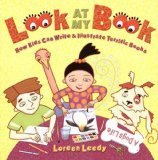

Writer's Workshop: Read aloud Look at My Book: How Kids Can Write & Illustrate Terrific Books and use it as a guide when beginning a new writing piece in writer's workshop. Discus with students the different components to the writing process, chart student ideas to display in class, and have students create either individual or a class "how to" guide for writing and illustrating a book.
and use it as a guide when beginning a new writing piece in writer's workshop. Discus with students the different components to the writing process, chart student ideas to display in class, and have students create either individual or a class "how to" guide for writing and illustrating a book.
©2011 by Dawn Little for Picture This! Teaching with Picture Books. All Amazon links are affiliate links and may result in my receiving a small commission. This is at no additional cost to you.
Filed under: "How to", Look at My Book, writers workshop Tagged: "how to" write a book, Look at My Book by Loreen Leedy, writers workshop








November 14, 2011
Author Day for Room 3T by Robin Pulver
Recommended Grades: 2-5
Mr. Topple's 3rd grade class prepares for an author visit from Harry Bookman with a surprising outcome!
Lesson Idea:
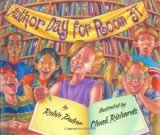

Reader's Workshop: Read aloud Author Day for Room 3T and plan your own author visit. Have students read books by one author and learn as much about that author as they can. Then if you are able, invite that author to your class or school to talk to the students. If you are unable to secure an author visit, consider having a Skype visit with an author. Many children's authors offer free Skype visits. An author visit is a great way to connect literature with students.
and plan your own author visit. Have students read books by one author and learn as much about that author as they can. Then if you are able, invite that author to your class or school to talk to the students. If you are unable to secure an author visit, consider having a Skype visit with an author. Many children's authors offer free Skype visits. An author visit is a great way to connect literature with students.
©2011 by Dawn Little for Picture This! Teaching with Picture Books. All Amazon links are affiliate links and may result in my receiving a small commission. This is at no additional cost to you.
Filed under: Author Day for Room 3T, Reader's Workshop, teaching with picture books Tagged: Author Day for Room 3T by Robin Pulver, author visits, free author skype visits, reader's workshop








November 7, 2011
Would You Rather. . . by John Burningham
Recommended Grades: 2-5
Would you rather your house was surrounded by water or jungle? Would you rather have jam dumped on you or water? These questions and more are provided for the reader to ponder in this highly interactive book.
Lesson Idea:
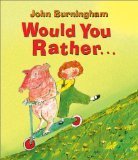

Read aloud Would You Rather… as part of an introductory lesson to inquiry. After discussing what inquiry is, read aloud this book and allow for students to ponder the possibilities and what they might be left wondering. Then, model for students your own "wonders." Share wonders as a class, and then have students write personal wonders in a notebook. Encourage students to continue adding to their wonder list as they think of new things to wonder about. Use this wonder list as a basis for an inquiry project.
as part of an introductory lesson to inquiry. After discussing what inquiry is, read aloud this book and allow for students to ponder the possibilities and what they might be left wondering. Then, model for students your own "wonders." Share wonders as a class, and then have students write personal wonders in a notebook. Encourage students to continue adding to their wonder list as they think of new things to wonder about. Use this wonder list as a basis for an inquiry project.
©2011 by Dawn Little for Picture This! Teaching with Picture Books. All Amazon links are affiliate links and may result in my receiving a small commission. This is at no additional cost to you.
Filed under: Inquiry, Would You Rather. . . Tagged: inquiry, Would You Rather. . .








October 31, 2011
Max's Words by Kate Banks
Recommended Grades: 2-5
Max has two brothers. One collects stamps and one collects coins. Max wants to collect something, too! He decides to collect words and when he begins to put the words together, a fun story evolves.
Lesson Idea:
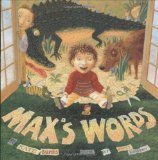

Word Choice: Read aloud Max's Words and discuss how Max took words and built them into sentences and then a story. Discuss the power of words. Then, begin a class collection of words. Create a class word jar, or something similar, for students to add words that they like. Encourage students to keep their own list of words in their reading log or writer's journal. Talk about the words that individual students list as well as the words the class shares.
and discuss how Max took words and built them into sentences and then a story. Discuss the power of words. Then, begin a class collection of words. Create a class word jar, or something similar, for students to add words that they like. Encourage students to keep their own list of words in their reading log or writer's journal. Talk about the words that individual students list as well as the words the class shares.
Check out the word choice link on the left for additional resources.
©2011 by Dawn Little for Picture This! Teaching with Picture Books. All Amazon links are affiliate links and may result in my receiving a small commission. This is at no additional cost to you.
Filed under: Max's Words by Kate Banks, six traits of writing, teaching with picture books, word choice Tagged: Max's Words, mentor texts, six traits of writing, word choice
 [image error]
[image error]

 [image error]
[image error]
[image error]
[image error]


October 24, 2011
Memoirs of a Goldfish by Devin Scillian
Recommended Grades: 2-5
Have you ever wondered about the day in the life of a goldfish? Here is a tell-all tale from a goldfish himself telling the reader all about his simple life. But is simple really better?
Lesson Idea:
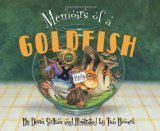

Voice: Read aloud Memoirs of a Goldfish and discuss how the author found the voice of a goldfish to really craft the story. The NorthWest Regional Education Laboratory (NWREL) defines voice as, "the heart and soul, the magic, the wit, along with the feeling and conviction of the individual writer coming out through the words. How would the voice of the book sound different if the author had chosen an iguana or hermit crab to write his memoirs? Read aloud and discuss more books with great voice (Doreen Cronin's Diary of a Fly, Diary of a Worm
and discuss how the author found the voice of a goldfish to really craft the story. The NorthWest Regional Education Laboratory (NWREL) defines voice as, "the heart and soul, the magic, the wit, along with the feeling and conviction of the individual writer coming out through the words. How would the voice of the book sound different if the author had chosen an iguana or hermit crab to write his memoirs? Read aloud and discuss more books with great voice (Doreen Cronin's Diary of a Fly, Diary of a Worm
 , and Diary of a Spider[image error] are great examples). Have students write memoirs from the point of view of their own pet. If they don't have a pet, have them choose an animal they know really well.
, and Diary of a Spider[image error] are great examples). Have students write memoirs from the point of view of their own pet. If they don't have a pet, have them choose an animal they know really well.
©2011 by Dawn Little for Picture This! Teaching with Picture Books. All Amazon links are affiliate links and may result in my receiving a small commission. This is at no additional cost to you.
Filed under: Memoirs of a Goldfish, six traits of writing, teaching with picture books, voice, writers workshop Tagged: Memoirs of a Goldfish, mentor texts, six traits of writing, teaching voice
 [image error]
[image error]
[image error]
[image error]
[image error]
[image error]

 [image error]
[image error]

October 17, 2011
One World, One Day by Barbara Kerley
Recommended Grades: 2-5
How do children around the world spend their day? Just like you and me. They get up, they eat breakfast, they go to school and more. The beauty of this book is in the photographs. Barbara Kerley shares the story of One World, One Day in this beautiful photographic essay.
in this beautiful photographic essay.
Lesson Idea:


Writers Workshop/Nonfiction: Read aloud One World, One Day and discuss how children around the world are just like the students in your class. Make note of how the author used photographs to tell the story of one day around the world. Discuss how photographs can tell a story just as well as text. Share other photographic essays. Have students take photographs of events in their day to create a photographic essay of a "day in the life of. . ."
and discuss how children around the world are just like the students in your class. Make note of how the author used photographs to tell the story of one day around the world. Discuss how photographs can tell a story just as well as text. Share other photographic essays. Have students take photographs of events in their day to create a photographic essay of a "day in the life of. . ."
Another great model is The Milestones Project: Celebrating Childhood Around the World
©2011 by Dawn Little for Picture This! Teaching with Picture Books. All Amazon links are affiliate links and may result in my receiving a small commission. This is at no additional cost to you.
Filed under: nonfiction, One World One Day by Barbara Kerley, photographic essays, writers workshop Tagged: nonfiction, One World One Day by Barbara Kerley, photographic essays [image error]
 [image error]
[image error]





October 10, 2011
Chalk by Bill Thomson
Recommended Grades: 2-5
In this wordless picture book, three children arrive in the park one day to find a bag full of chalk. Each takes a piece of chalk and draws a picture, which beautifully comes alive in this wonderfully illustrated book.
Lesson Idea:
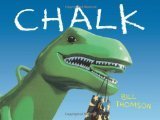

Writers Workshop: Share Chalk with your students and discuss the sequencing of the story. Since there are no words, the author/illustrator must take careful consideration when drawing the story. The pictures tell the story. Ask students to create their own wordless picture book paying careful attention to the sequencing of their story.
with your students and discuss the sequencing of the story. Since there are no words, the author/illustrator must take careful consideration when drawing the story. The pictures tell the story. Ask students to create their own wordless picture book paying careful attention to the sequencing of their story.
Model Text/Transition Words: You can also use the book as a model text. Use it to model sequencing by writing a sentence for each page using transition words. Then, have students use a different wordless picture book to practice writing in sequence using transition words.
Other great wordless picture books are Pancakes for Breakfast by Tomie de Paola and Wave by Suzy Lee.
by Tomie de Paola and Wave by Suzy Lee. 
©2011 by Dawn Little for Picture This! Teaching with Picture Books. All Amazon links are affiliate links and may result in my receiving a small commission. This is at no additional cost to you.
Filed under: Chalk by Bill Thomson, Sequencing/Transitions, wordless picture books, writers workshop Tagged: Chalk by Bill Thomson, sequencing, transition words, wordless picture books, writers workshop








October 3, 2011
Mirror Mirror: A Book of Reversible Verse by Marilyn Singer
Recommended Grades: 4-6
A book of poems about fairy tales, written in reverso. Two poems, you read one up and one down.
Lesson Idea:
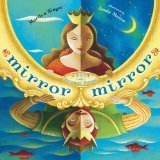

Poetry/Point of view: Read aloud Mirror Mirror: A Book of Reversible Verse and discuss how when you read one poem it tells you the point of view of one character, but when you read the second poem, it tells the point of view of the other character with only a few changes in capitalization or punctuation (ONLY). In an author's note, she explains how she played around with this technique to create reverso. Have students use the same technique to describe two character's points of view from a novel they read or even two points of view of historical figures during a period of time.
and discuss how when you read one poem it tells you the point of view of one character, but when you read the second poem, it tells the point of view of the other character with only a few changes in capitalization or punctuation (ONLY). In an author's note, she explains how she played around with this technique to create reverso. Have students use the same technique to describe two character's points of view from a novel they read or even two points of view of historical figures during a period of time.
Extensions: Use this book/activity with George vs. George (for content connections) or Voices in the Park (for point of view connections)
©2011 by Dawn Little for Picture This! Teaching with Picture Books. All Amazon links are affiliate links and may result in my receiving a small commission. This is at no additional cost to you.
Filed under: Content Connections, Mirror by Marilyn Singer, Poetry, point of view Tagged: author's craft, Mirror, Mirror by Marilyn Singer, Poetry, point of view








September 26, 2011
Karl and Carolina Uncover the Parts of a Book
Recommended Grades: 2-5
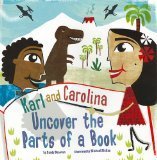

Karl and Carolina love to learn. In Karl and Carolina Uncover the Parts of a Book (In the Library) , children will learn about the parts of a book right beside the characters.
, children will learn about the parts of a book right beside the characters.
Lesson Idea:
Text Features: Read aloud Karl and Carolina Uncover the Parts of a Book (In the Library) and discuss the parts of a book. Discuss how the author combined elements of fiction and nonfiction to tell the story. Read aloud this book at the beginning of a unit on nonfiction text features to introduce a few text features. Or read it aloud to review a few features. The author does a great job defining the features and the illustrations are colorful and lively. After reading aloud this book as an introduction, create a class checklist of features that can be displayed permanently. As students locate new features in their reading, they can add to the list.
©2011 by Dawn Little for Picture This! Teaching with Picture Books. All Amazon links are affiliate links and may result in my receiving a small commission. This is at no additional cost to you.
Filed under: Karl and Carolina Uncover the Parts of a Book, teaching with picture books, text features Tagged: Karl and Carolina Uncover the Parts of a Book, teaching nonfiction text features, text features











